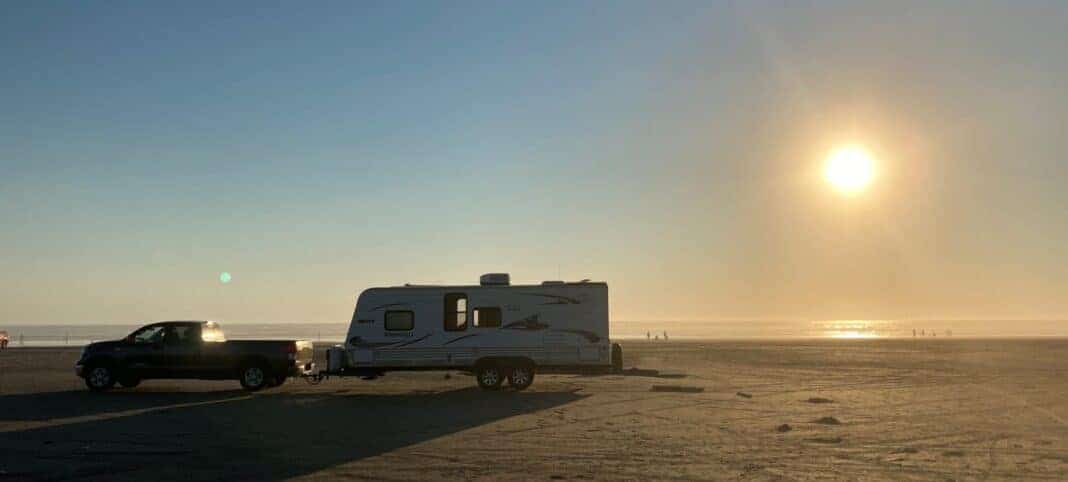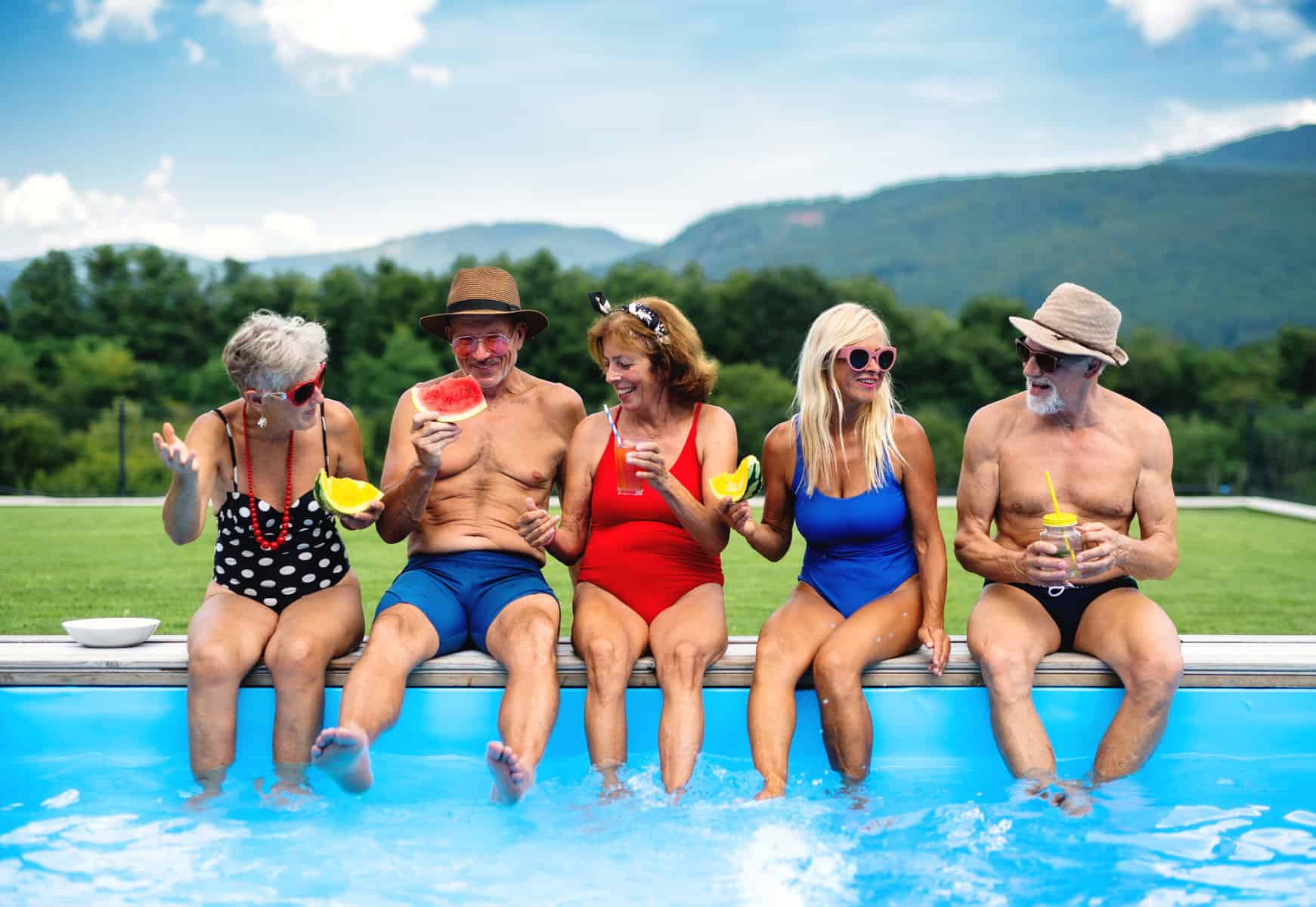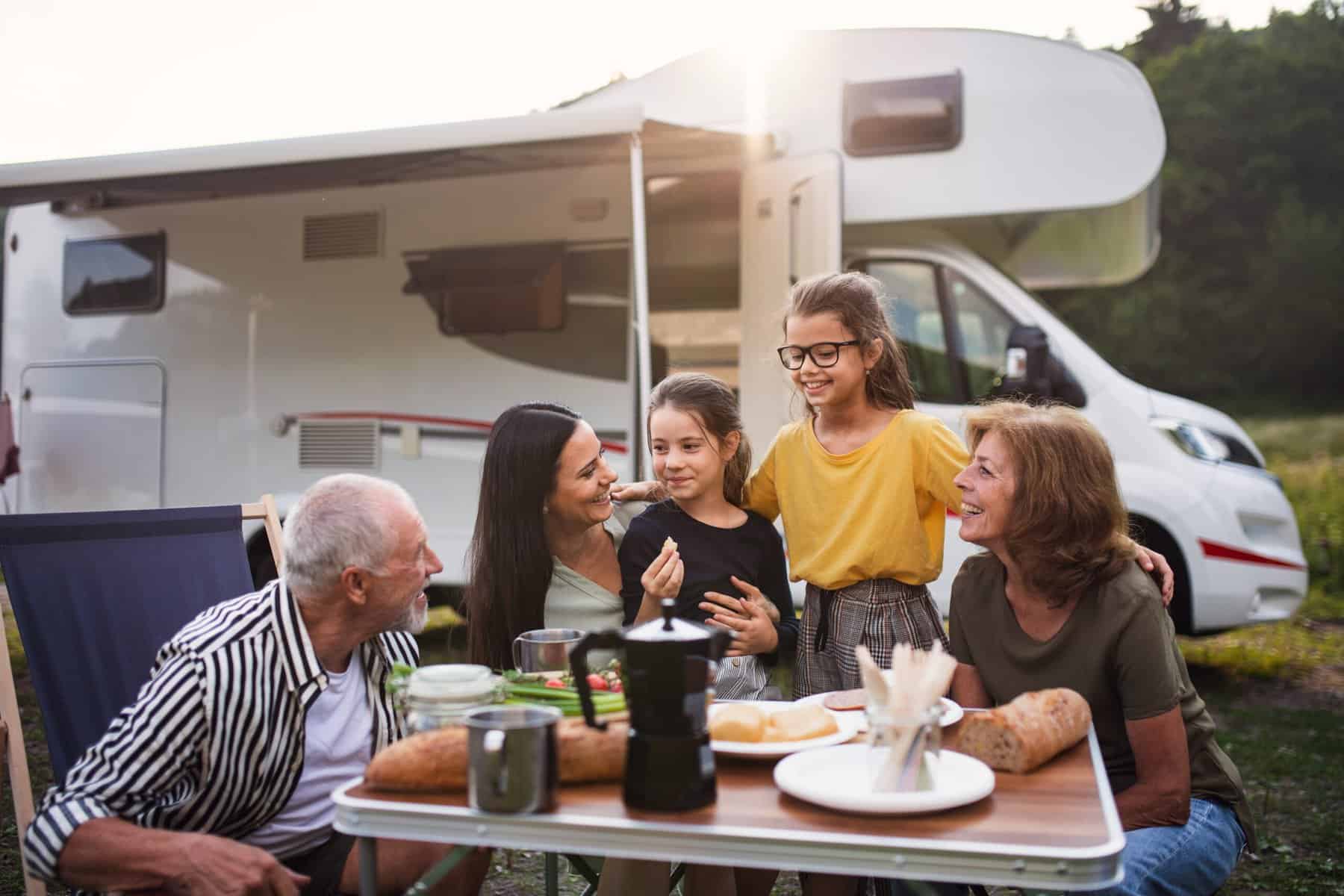Want to break free of RV air-conditioning when warm weather finally gets here?
These 17 RV air conditioner alternatives are easy ways to stay cool without A/C when the temperature rises.
Love Boondocking?
Here’s How to Stay Cool Without Campground Hookups in Warm Weather.
My wife and I prefer to disperse camp (outside of campgrounds) in the boondocks. The boondocks are quiet, scenic and the price is right (free). Many RVers tell me they want to camp in the boondocks. But they wonder how to keep an RV cool without shore power to run their air-conditioner?
RVers who camp inside primitive campgrounds with no hookups also face the same problem of staying cool without using RV air conditioning.
Then there are RVers who prefer not to run an RV air conditioner, even when shore power is available. They just don’t like the noise, condensation, vibration, etc.
The good news is that if you want to stay cool without an RV air conditioner, I’ve got 17 RV cooling alternatives you can use to stay cool camping during hot spells. And in a worst-case situation, I can show you how to run your RV A/C on low power, too.
17 RV Air Conditioner Alternatives to a Roof Mounted Air Conditioner.
Don’t let warm weather prevent you from camping without an A/C. As a long-time boondocking fan, I have over a dozen ways to keep an RV cool without being connected to shore power, or even when I am plugged in. These tips work for any RV style, and nearly any camping location too.
Position Your RV in the Shade
One of the many nice things about boondocking is that you can park an RV about any way desired to take advantage of sun, shade, view, prevailing wind, slope, etc. A great RV air conditioner alternative is to position your RV in the shade whenever possible.
If the campsite won’t be in the shade all day, position the RV so that it will be shaded during the hottest part of the afternoon.
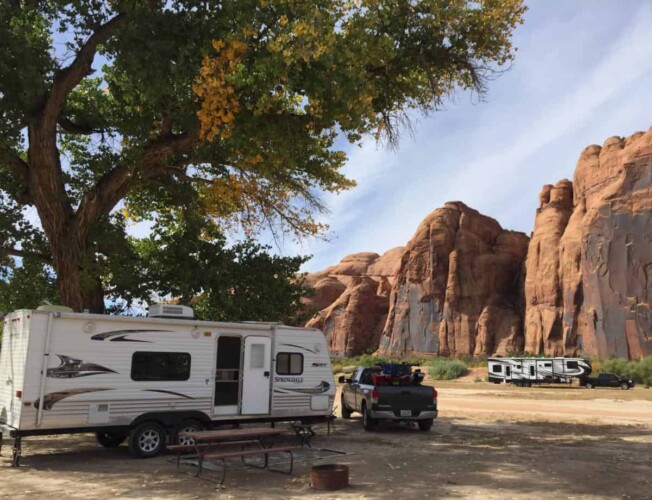
Use shade cloth to cool the camper.
If there is no natural shade available from trees, buildings or tall terrain, make your own with shade cloth. Take along a variety of bungee cords and nylon straps. Then strategically hang the cloth to block the rays of the sun.
Position your RV to take advantage of prevailing winds.
When possible, park the RV crosswise to the prevailing winds. Open the windows to let the air flow through the camper.
Carry portable fans.
Portable fans can be used as an RV cooling alternative. They create a refreshing breeze within the RV or to bring in outside air. Love camping away from shore power? Consider rechargeable fans. You can power these 12-volt models with the RV house battery. Self-contained battery-operated fans are another good way to keep the RV cool in warm weather.
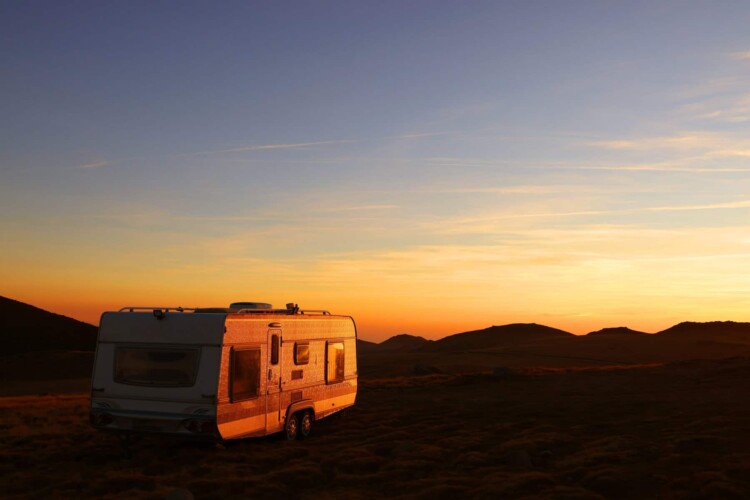
Cook outside whenever possible.
By making meals outside, you won’t add extra heat to the inside of the RV. Since there is likely a breeze outside, it keeps the RV chef cooler too!
Try a swamp cooler.
When camping in arid areas with low humidity, try using a 12 volt evaporative cooler (aka swamp cooler). These portable cooling units don’t require shore power. They also consume much less power than a conventional RV air conditioner.
Position your patio awning to the south / southwest.
Think about this when deciding how to park your camper in hot weather. This RV cooling alternative shades the RV during the hottest part of the day.
Upgrade to LED RV lights.
Replace your existing interior incandescent lights with energy efficient LED lights. They emit much less heat when operating. Not only will this RV air conditioner alternative help you stay cooler without A/C, but it helps conserve your RV house batteries when boondocking.
Unplug from your electronic devices.
Keep non-essential electronics (TV, computers, phone chargers, inverter etc.) turned off whenever possible. Unplug the power transformers to avoid generating extra heat within the RV. This also helps conserve the house batteries when dry camping.
Open and close RV windows according to time of day.
When you’re summer boondocking, be sure to open RV windows at night to capture cooler night air. Then close them in the morning to trap the cooler air inside, during the warmer part of the day.
Choose high elevation camping whenever possible.
If it gets too hot at your campground, move your RV to a higher elevation if you can. Statistically, it is three degrees cooler for every 1,000 feet of elevation gained. Not only will this RV air conditioner cooling alternative keep your camper cooler, but the mountain scenery at higher elevations can be spectacular.
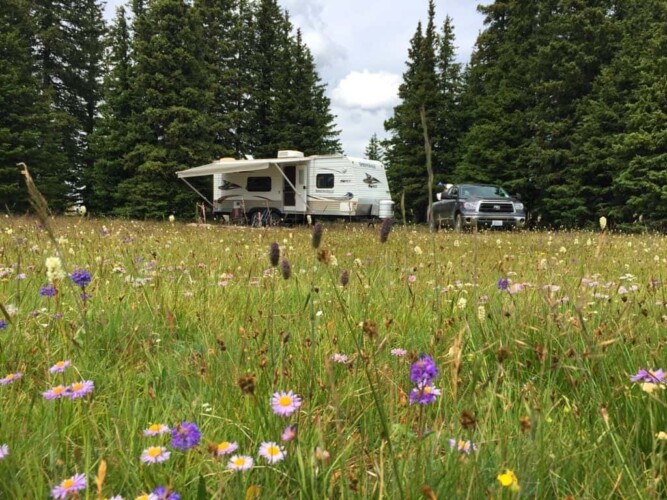
Install reversible RV ceiling fans.
RVs typically come with one ceiling fan. But a single unit doesn’t do much good in hot weather. Get ready for summer by installing two reversible RV fans in your roof vents. Use them together for one of the best RV cooling alternatives strategies: Use one fan to pull air into your RV. Then use the other to exhaust air out of your RV. This allows you to exchange warm air with cool, and cause a cross-breeze between the two fans.
Cover your RV skylights.
Keep hot sunlight out by covering your RV skylights. It is best to cover them from the outside when possible. The alternate is to get RV vent pillows. These insulators slow the transfer of heat to the inside of the RV.
Insulate RV windows too.
Install reflective foil bubble insulation on the inside of windows. This camper insulation material reflects sun rays and insulates against heat transfer. Interestingly, this RV air conditioner alternative idea can also be used in winter to keep your RV warmer.
Camp near a large body of water.
Any large lake, reservoir, or oceanside campground is always cooler than inland camping areas. This is especially true near the ocean. Typically, there will be an onshore breeze too.
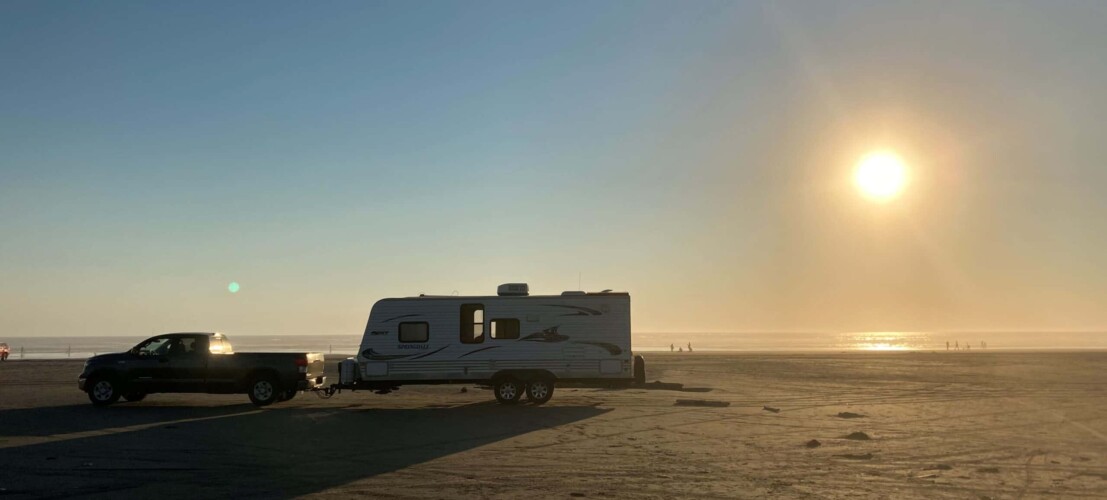
Consider exterior RV shades.
Another cooling alternative for RV windows are EZ Snap Shades. These “no drill” exterior RV shades mount over camper windows. They keep out 90% of the sun’s heat without blocking the view.
Worst case: use your RV A/C on low power.
What if none of these RV cooling alternatives manage to keep your camper cool enough when you’re dry camping? Don’t worry. You can still run your RV on low power to survive a heat wave.
Prepare ahead of time by installing a SoftStartRV unit. This unique RV cooling alternative gadget allows you to operate an RV rooftop air conditioner with low power, or a smaller generator. Power your RV air conditioner with a generator, or on a limited 15 or 20-amp shore power connection like you might have while moochdocking at a friends or relatives home. It also limits the amount of noise when the air-conditioner starts providing a quieter experience.
Now You’re Ready to Go RVing in Warmer Weather
By employing the above cooling alternative tips, you will be able to comfortably camp without hookups while staying cool without A/C. When hookups are no longer a requirement, you will soon discover you have many more options on where you can camp. Forest service campgrounds, primitive state parks, or even the boondocks like my wife and me.

